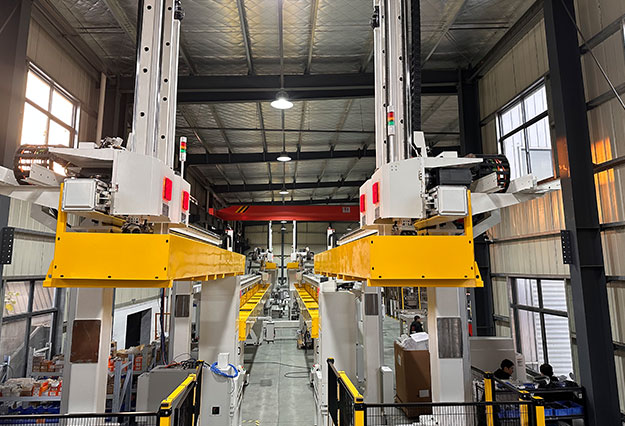NEWS
In the field of modern industrial automation, the automatic loading truss line has become an indispensable important equipment in logistics and production lines with its efficient, accurate and flexible characteristics. This article will introduce the function and operation flow of loading truss in detail, aiming to help readers better understand and apply this advanced equipment.
Functional overview
Accurate handling capability: The loading truss automatic line is equipped with high-precision sensors and advanced control systems, which can accurately identify and grasp items of various shapes, sizes and weights to achieve accurate handling to the specified position. This function not only improves the accuracy of handling, but also significantly improves operational efficiency.

Excellent high load performance: Thanks to the robust truss structure and powerful drive system, the truss can carry and stably handle a variety of heavy loads, easily responding to the needs of different production scenarios. The trusses demonstrate excellent performance in the efficient and accurate transfer of items from the production line to transport vehicles such as vans, containers, etc.
Flexible to various environments: The path planning and operating procedures of the automatic truss line can be flexibly customized according to actual production needs to adapt to different production line layouts and process requirements. This feature allows the truss to easily cope with a variety of complex production environments and complete a variety of handling tasks.
Intelligent control system: The loading truss automatic line integrates advanced PLC technology, network communication technology and sensor detection technology to achieve automatic and intelligent control. Through technology such as programming and visual inspection, the truss can be seamlessly connected with other production equipment, effectively reducing labor costs and improving production efficiency and product quality.
Detailed explanation of work flow
Task reception and path planning: After receiving the task instructions from the production line, the control system will clarify the specifications, quantity and target location of the items to be moved. According to the task requirements and site environmental conditions, the control system will carry out path planning and calculate the appropriate handling path and speed to ensure that the robot can complete the task safely and efficiently.
Initial position adjustment and start: Before starting the automatic truss line, the operator needs to confirm that the manipulator is in the initial position. If it is not in the initial position, adjust it to the initial position. After confirmation, the manipulator can be started to run.
Grasp and handling process: the lifting cylinder of the manipulator begins to operate after receiving the signal, and descends along the Z axis to the position of picking up the item to grasp. After successful grasp, the manipulator rises along the Z axis to the truss, and then runs along the X or Y axis above the target position. After reaching the target position, the manipulator descends and places the item to the designated position to complete the handling task.
Task feedback and record: After the task is completed, the control system will feedback and record the task, including the transport time, path trajectory, and load information. This information provides valuable data support for subsequent analysis and optimization.
Maintenance and maintenance: In order to ensure the long-term stable operation of the truss automatic line, it is necessary to maintain and maintain it regularly. Check the wear condition of each part, and replace the badly worn parts in time; Check and calibrate the electrical connection and control system to ensure that the initial position and condition of the joints and actuators are correct.
In summary, the automatic loading truss line has brought significant convenience and benefits to modern industrial automation with its functional characteristics of accurate handling, high load capacity, flexibility and intelligent control. With the continuous progress of technology and the continuous expansion of application fields, trusses will play a more important role in the future.